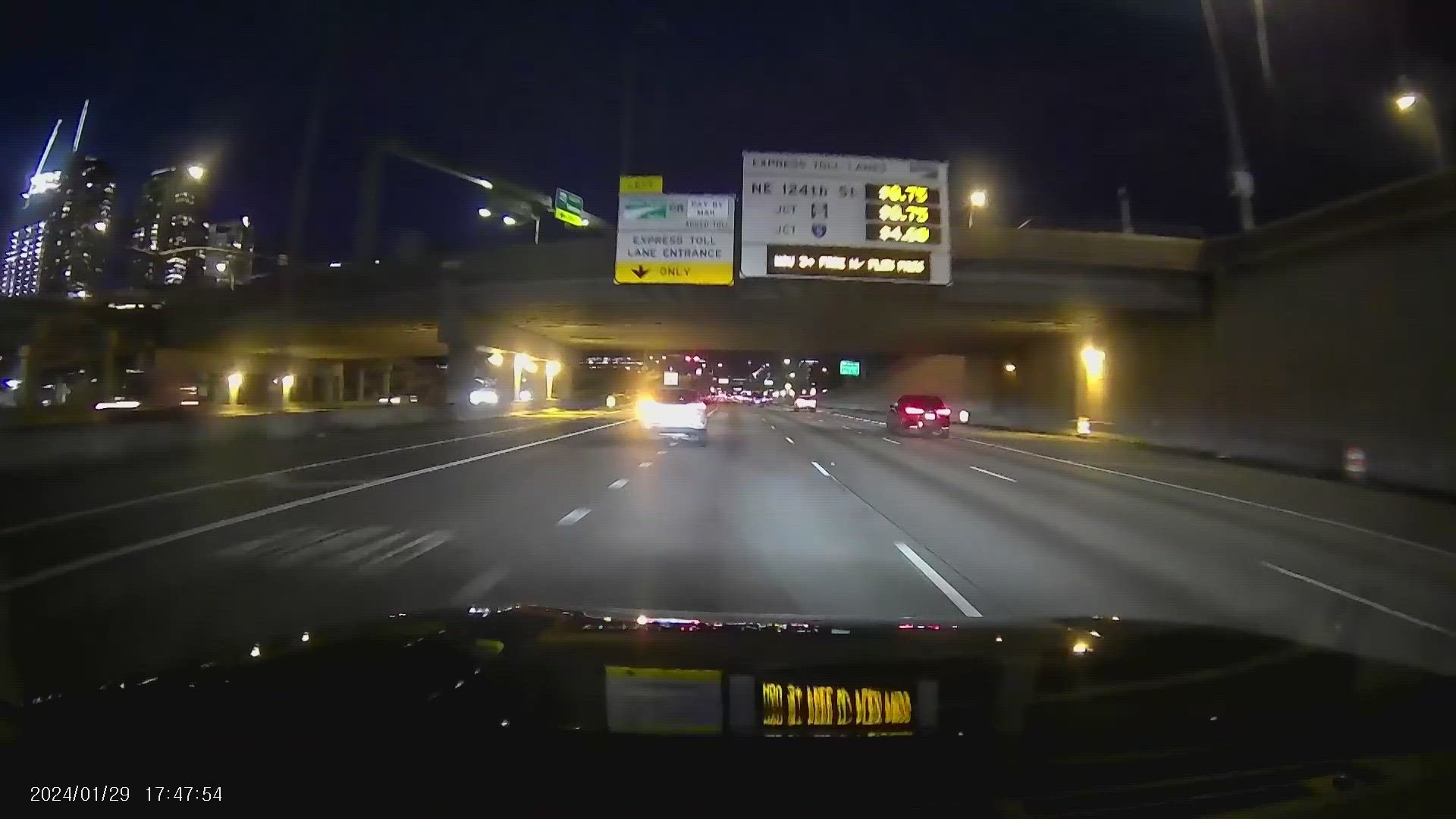OLYMPIA, Wash. — The Washington State Transportation Commission (WSTC) voted Monday to approve a proposal that would raise tolling rates on Interstate 405 and State Route 167 in an effort to limit traffic impacts and raise money for construction.
Toll rates adjust depending on traffic volume. Under the proposed change, rates for I-405 and SR 167 would range from a $1 minimum during low-traffic times to $15 during high-traffic times. Evening tolling and peak hour HOV policies will be increased by an hour to 8 p.m. on both roadways.
All of these changes will go into effect on March 1.
The transportation commission said legislators asked them to review options for raising tolls in the transportation budget, citing construction work that would be over its expected budget. The change would also reduce demand for the tolling lanes, helping to reducing traffic and make them more effective for car drivers and public transportation, according to the commission.
The WSTC held the virtual hearing at 9 a.m., which included final chances for public comment before a vote.
Deputy Director at the Washington State Transportation Commission Carl See said in October 2023 that the rate increases have been proposed for multiple reasons, including state revenue losses during the COVID-19 pandemic closures and efforts to alleviate traffic congestion.
However, See said the increase is largely due to construction funding deficits.
"The funding issue is tied to the recently awarded projects, the north end expansion from one lane to two lanes on 405 and improvements on 167 on the south," See said last year. "Both those bids ... came in significantly over budget compared to the cost estimates. Nevertheless, the Legislature did give the approval to award the bids with recognizing they're going to need to find a way to fill the gap next session."
See also said the increases are necessary to reduce traffic on the busy highways.
"What we're seeing right now, though, is that times when you choose to pay, say the maximum rate, you may end up in congestion of the ramps because it certainly just isn't the rates aren't calibrated to a point where it's alleviating the traffic."

